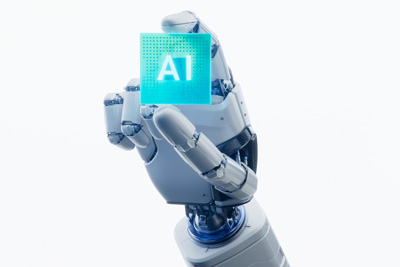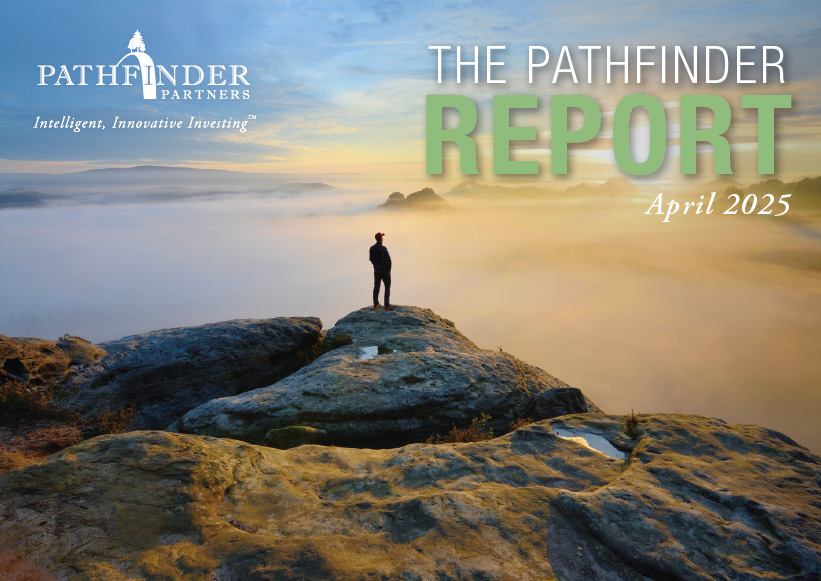Guest Feature
From Bricks to Clicks: What We Can Learn from the History of Apartment Tech
By Matt Quinn, Managing Director

At a recent property technology conference in Las Vegas, the running icebreaker was “have you heard of A.I.?”. The joke garnered some chuckles because nearly every vendor was pitching A.I. and the importance of adopting it “Now!” “At your property!” One speaker – who owns a lot of real estate and employs a lot of people – said his employees who don’t adopt A.I. “will be forced to do so when they update their resumes.” There was talk of “agenic A.I”, which is basically A.I. that is so advanced you can drop the “A”. And every time I had a mini-panic attack that we hadn’t yet deployed dog-walking-robots across Pathfinder’s portfolio, I reminded myself that when adopting new technologies, it’s best to take a measured approach. (For the record, Sony Betamax® was before my time and I’m proud that I never bought a Blu-ray® player.)
For the past 12 months, Pathfinder has been crafting an updated property technology plan and beta-testing select technologies that use A.I. We plan to do our due diligence, gather data from our residents and mangers and craft a comprehensive – and flexible – strategy. I’d categorize our approach as a happy medium between “slow and steady” and “move fast and break things”.
And as we navigate this period of rapid change, I thought it could be helpful to research prior technological disruptions in the apartment space to gain perspective on today’s A.I. craze. Here are a couple of the major ones of the past 200 years and how they played out:
Late 1800s: Running Water and Sewage Systems Come to U.S. Apartments – Talk about a game changer! Prior to the introduction of plumbing systems, apartments in the U.S. sourced their water from wells, rivers or public water pumps and residents used outhouses or chamber pots (which they emptied) for their bathroom needs. Following the cholera outbreak of 1866, cities throughout the U.S. started mandating water and sewage systems and by 1920 – more than 50 years later – most urban apartment buildings had running water, private toilets and underground sewage systems.
During this 50-year period of product development, several technologies aimed at resolving the clean water issue were tested and scrapped. These included wooden pipes (they broke), lead pipes (they poisoned you) and tankless water heaters (they exploded). We can thank England’s Thomas Crapper – seriously – for revolutionizing loo technology in the 1890s and helping spur worldwide adoption in the years to come.
 The lesson? There will be an inevitable A.I. trial period where initial technologies fail, and newer technologies evolve. And my newfound understanding of the U.S.’s water and sewer system leads me to an important question – who is going to be the Thomas Crapper of A.I., and how do we flush out the others?
The lesson? There will be an inevitable A.I. trial period where initial technologies fail, and newer technologies evolve. And my newfound understanding of the U.S.’s water and sewer system leads me to an important question – who is going to be the Thomas Crapper of A.I., and how do we flush out the others?
Early 1900s: Electrification of U.S. Apartments – Prior to the electrification of U.S. apartments, tenants used kerosene or piped-in gas for lighting, fireplaces for heating, wood stoves for cooking and ice boxes for refrigeration. Tenants gathered wood, coal and ice on a regular basis, heated their bathwater by fire and constantly monitored the various hazards. In the early 1920s – 40 years after Thomas Edison’s dramatic electrification of New York City’s Pearl Street Station, the first central power plant in the U.S. – U.S. apartments started being retrofitted with electrical wiring and landlords began marketing “modern” apartments – those with electric lights and appliances. By the 1950s, municipalities began requiring electrical systems in residential construction and electricity in apartments had become ubiquitous.
During the 70 years between Edisons’s first power plant and the widespread adoption of electricity in U.S. apartments, much went wrong. The state and federal governments were slow to adopt and enforce electrical codes, which led to a mishmash of voltages and product specifications. Early retrofits were done with “knob-and-tube” wiring, which wasn’t grounded and created massive fire risks. In parallel, many retrofitted buildings’ initial infrastructure didn’t match tenant energy needs so blackouts were common, angering residents (have you ever had to throw out all the food in your fridge?).
The lesson? As in the early days of electrification, the U.S. government is today struggling to develop and enforce regulations around A.I. Many of the apartment-related A.I. products in use today – competitor rent surveying, tenant credit screening, property security surveillance and rent collection impersonators – may see government regulation or be banned. Landlords need to use commonsense when adopting A.I. tools and be careful to avoid products that could agitate tenants or create privacy or fair housing risks. If, like knob-and-tube wiring, a new product doesn’t feel “grounded”, a wait-and-see approach may be better.
As the pace of A.I. technology and adoption progresses and initial technologies improve, early adopters will bear both the rewards and the consequences. Decision-makers across many industries are balancing the use of A.I to stay competitive without taking on unnecessary risks associated with unproven products. The likely winners will leverage their real-world experiences with lessons from the past and carefully source and implement A.I. technologies that create long-term business solutions. In the words of Dr. Iris Hineman, the geneticist who created the A.I. crime predication model in Stephen Spielberg’s Minority Report, “The system is never wrong. But it’s not always right.”
Matt Quinn is Managing Director at Pathfinder Partners, focusing on asset management activities. Prior to joining Pathfinder in 2009, Matt worked with a San Diego-based firm which consulted on mergers and acquisitions and with the Wealth Management division of a California regional bank. He can be reached at mquinn@pathfinderfunds.com
Share this Article
IN THIS ISSUE
PATHFINDER MULTIFAMILY OPPORTUNITY FUND IX, L.P.
CHARTING THE COURSE
On Uncertainty, Geopolitics and Own Goals
FINDING YOUR PATH
The Tariff Roller Coaster Ride. Hang On and Buckle Up Tight.
GUEST FEATURE
From Bricks to Clicks: What We Can Learn from the History of Apartment Tech
ZEITGEIST
News Highlights
TRAILBLAZING
Cedardale Apartments, Federal Way (Seattle), WA
NOTABLES AND QUOTABLES
Perseverance
